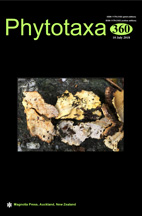Abstract
After many recent findings regarding geographical distribution and nomenclatural changes, an updated and revised checklist of the Egyptian endemic flora was needed. This study provides an up to date checklist of vascular taxa exclusive to Egypt and their distribution within the administrative provinces. Egypt hosts 48 endemic taxa (including 35 species, seven subspecies and six varieties) belonging to 42 genera, 18 families and representing 2.3% of the total flora. The most represented families are Asteraceae, Lamiaceae, Caryophyllaceae, Fabaceae, Asparagaceae and Brassicaceae, while the most represented genus is Silene (three endemic taxa). Therophytes and chamaephytes are the most represented life-forms among Egyptian endemics. The richest regions in Egyptian endemic taxa are Southern Sinai (14 taxa), Northern Sinai and Matrouh (12 taxa each). Agglomerative hierarchical clustering (AHC) enabled the division of Egypt into three main regions based on the occurrence of endemic taxa: Eastern Egypt (31 taxa, 25 exclusive and six shared taxa), Western Egypt (14 taxa, seven exclusive and seven shared taxa) and Middle Egypt (12 taxa, eight exclusive and four shared taxa). This checklist will help to focus conservation efforts and provide a framework for research, protection and policy implementations for these endemic taxa.

